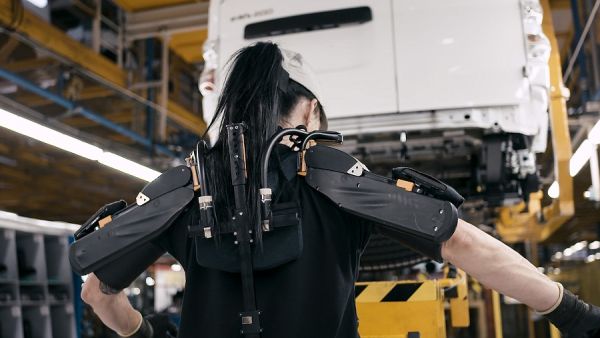Humans Are at the Heart of Nissan’s Future Factories

As Nissan prepares to build a new generation of electrified, intelligent and connected cars, the company is making a series of investments to upgrade its production technologies and facilities.
At first glance, these investments in automation and robotics might suggest that the factory of the future will be the exclusive domain of machines, not people. In fact, nothing could be further from the truth: manufacturing is as reliant on human beings as ever, and technology will serve to enhance their work.
This is because Nissan aims to do more than simply maximize output over a given period of time. We see efficiency in terms of preventing mistakes, maintaining quality, ensuring that workers are freed from monotonous tasks, and reducing strain and fatigue from work.
Entire engineering teams at Nissan are dedicated to studying ergonomics. For every process, they analyze the physical burden of certain actions (such as lifting, reaching, twisting or crouching) or the mental burden of tasks that are repetitive or require constant concentration. They then pick the most burdensome processes and come up with solutions to make life easier.
Here are just a few examples of how Nissan is assisting human workers as they bring the latest vehicles to life.
Choosing when to automate
Certain assembly line processes are best suited for robots, particularly if they’re simple and repetitive yet relatively strenuous for humans.
One example is the installation of a headliner, the overhead layer of material on the inside of a car’s roof. Ordinarily, workers must enter each vehicle’s cabin to perform this physically demanding job. The task has become even harder as cars come with more connected features, adding to the number of devices in and around the headliners.
Nissan’s solution is to use robots to insert the headliner through the front of the vehicle and then fasten it.
“Headliner installation is a physically demanding job, and it’s getting more difficult,” notes Nissan’s Kouji Abe, who worked on the new automated process. “Automation took years of development and testing, but hopefully we can now shift people to roles that can benefit the most from human expertise.”
Automation is also enhancing the quality control process, benefiting customers. Inspection staff at Nissan’s plants in Japan can pass or fail vehicles by simply speaking into a microphone connected to a voice recognition system. The results and other data are automatically logged, eliminating not only mistakes but also cumbersome paperwork and unnecessary movements.
In safe hands with cobots
Industrial robots that work on things like welding and assembly are ordinarily kept in cages for safety reasons, due to their size, strength and speed of movement.
By contrast, cobots (short for “collaborative robots”) offer a perfect solution for processes where people and machines need to work closely together. Cobots are robotic arms with limited strength and speed of movement. In addition to being extremely nimble, they can be easily reprogrammed to learn new tasks.
At its Oppama vehicle assembly plant (shown above) and Yokohama powertrain plant, Nissan uses Universal Robots’ UR-10 cobots for multiple processes requiring frequent lifting or repetitive motions, such as loosening bolts or carrying engine components.
Miyako Shiraishi, a production engineer at the Yokohama Plant, says there were several reasons for choosing cobots over conventional robots.
“They can share the workspace with workers, we can build systems without needing safety fences, and we can move them around easily to adapt to changes in our production needs,” Shiraishi explains.
Karakuri: old-school automation
Karakuri is a Japanese word for devices that use mechanical gadgetry – rather than electronics, hydraulics or pneumatics – to accomplish a task. The name originally comes from a centuries-old tradition of mechanical puppetry in Japan.
Karakuri involves clever and inherently eco-friendly solutions to practical problems often involving hooks, pulleys and counterweights to perform tasks. Carmakers use karakuri to transport objects over long distances or to ensure that the right parts for any given process are automatically delivered to workers, making tasks easier and more efficient.
Background Information
Nissan Middle East
Nissan’s heritage in the Middle East goes way back to 1957, when the first Nissan vehicle was sold in Saudi Arabia. Since then the Nissan Legacy has taken deep roots in the hearts of the Middle East people by becoming an integral part of their lives.
Currently Nissan is one of the most popular and successful automobile brands in the Middle East boasting of a strong line-up ranging from popular passenger cars to powerful 4x4 series and commercial vehicles.
In its quest to closely understand the local needs of its customers, Nissan Motor Co. Ltd. in June, 1994 set up a regional Middle East head quarters in Dubai, thus becoming the first Japanese car manufacturer to accomplish this feat. The Nissan Middle East FZE office houses a highly sophisticated training center which serves as an excellent training ground for undertaking Nissan customer care and service activities.






